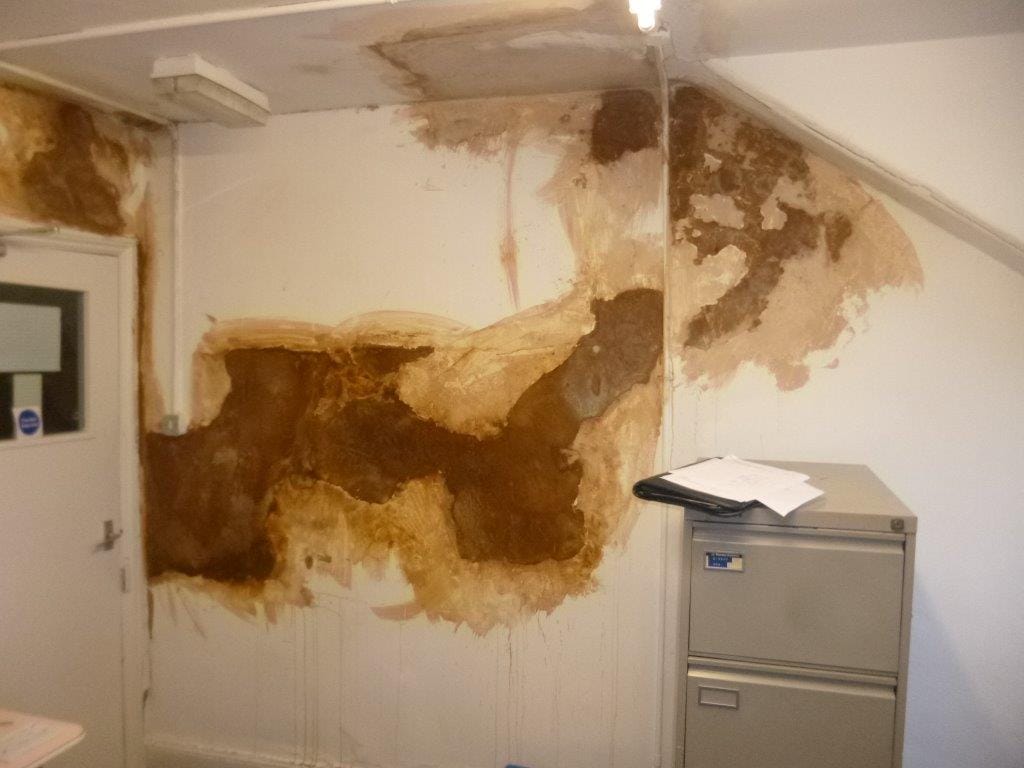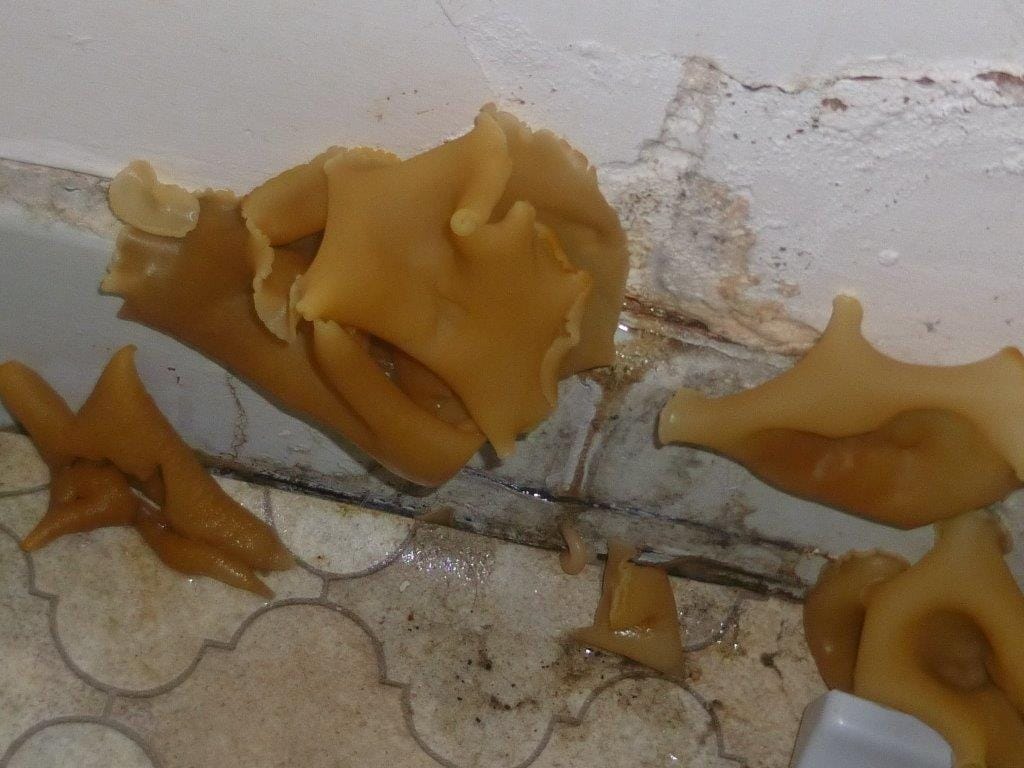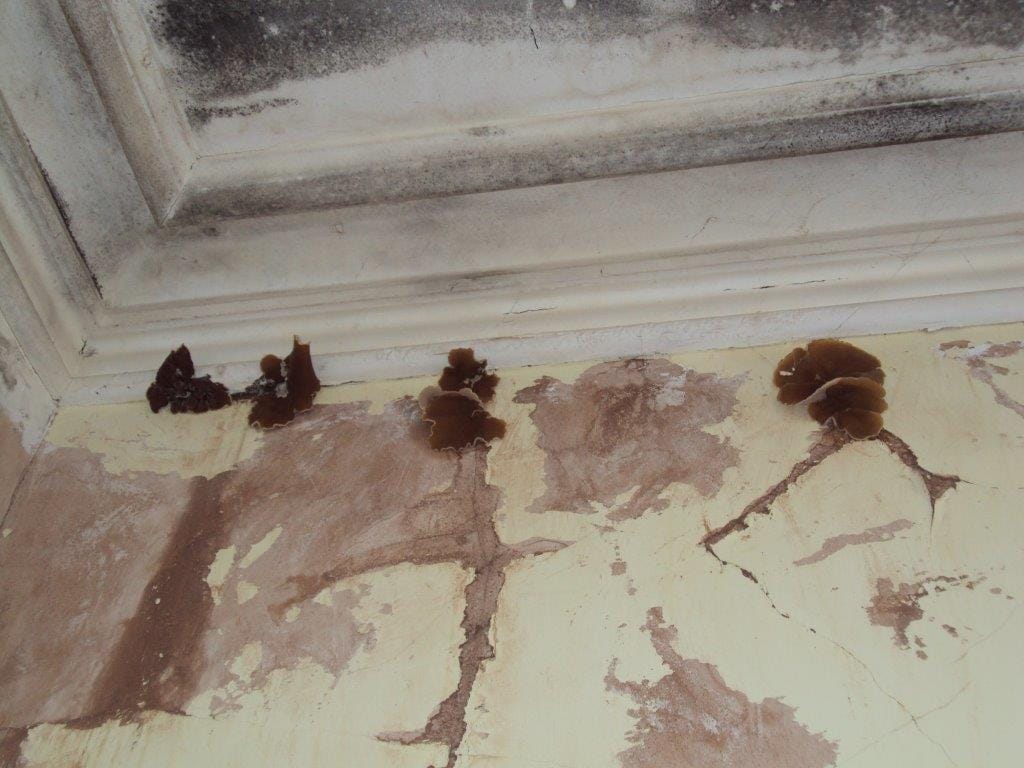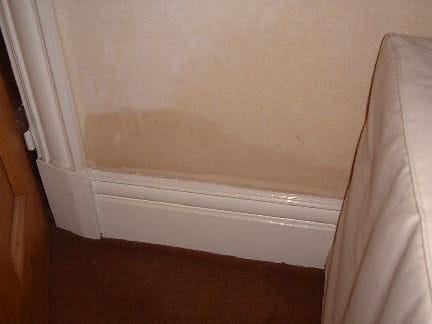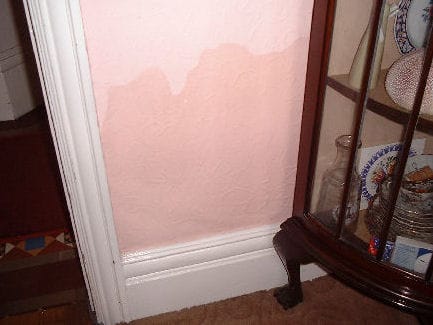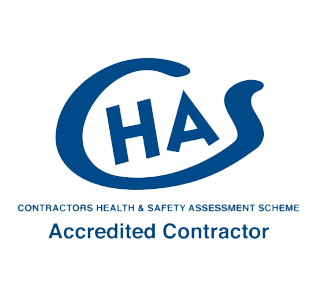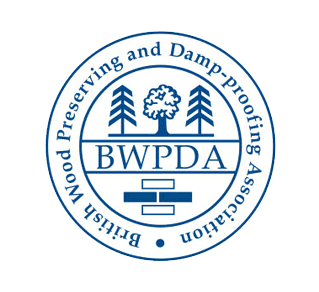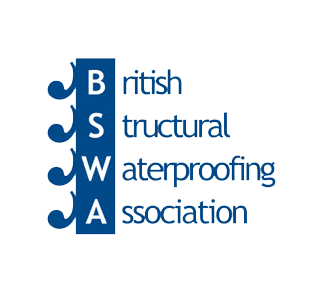Damp Plaster Treatment & Repairs
Wall plaster becomes contaminated with Dampness from walls, floors and the atmosphere. The presence of a Damp Stain or salting on the surface of the plaster is a sure sign that something is going on that needs professional investigation.
Some types of backing coat plasters and renders (sometimes referred to as scratch coats and float coats) in themselves can be problematic especially if they ever come into contact with Dampness. Gypsum based backing coats are notorious for holding moisture and remaining damp for long periods, even after the source of Dampness has been controlled and removed.Where black mortar has been used as a backing coat, this can also be problematic if exposed to Dampness over long periods of time. Even renovating plasters, designed for use in older buildings, are intolerant of further or ongoing exposure to moisture sources. It is clear then that depending of the type of the wall plaster used, it may emulate a damp problem long after the problem with free moisture has been dealt with.The key to dealing with Damp Plaster is to identify the source of moisture and rectify it wherever possible. Once the source of moisture has been dealt with consideration may need to be given to the replacement of the wall plaster, either in a like material or by selection of an appropriate remedial system. It is also worth remembering that Damp Plaster can be hiding problems beneath, especially in older buildings. Built in timbers (joists, lintels, bressumers, wall plates, fixing grounds, bonding timbers, rafters, purlins, trusses etc.) may have been exposed to moisture for long periods of time. This in turn may have led to an attack by Wet Rot or Dry Rot or to infestation by Wood Boring Beetles, undetectable on the surface of the plaster other than the presence of damp staining.
Remedial replastering following the introduction of a Damp Proof Course is an essential part of the Damp Proofing process. Ground salts brought into the wall by Rising Damp contaminate the structure and become concentrated in wall plaster during the evaporation process. Some of these salts are Hygroscopic and have an ability to attract moisture including moisture from the air, it is therefore important to the success of the remedial work that contaminated wall plaster (including concentrations of ground salts) is removed and replaced with an appropriately specified and applied replastering system. Remedial replastering and Damp Proofing must be considered as a Damp Proofing system and therefore to employ one without the other will inevitably not deal effectively with a true Rising Damp problem.Investigation of moisture sources and Damp staining is a job for a professional. There are products and advice freely available for dealing with Damp and Plaster problems However, we see many situations where we are called to deal with problems relating to poor advice, workmanship or the inappropriate use of materials. At best a client may have spent money unwisely, at worst there could be significant Rot problems that may have been covered up inadvertently.
Contact Us now on 0800 055 6966 for advice or to book an appointment for one of our qualified Surveyors to visit and investigate your problem.

